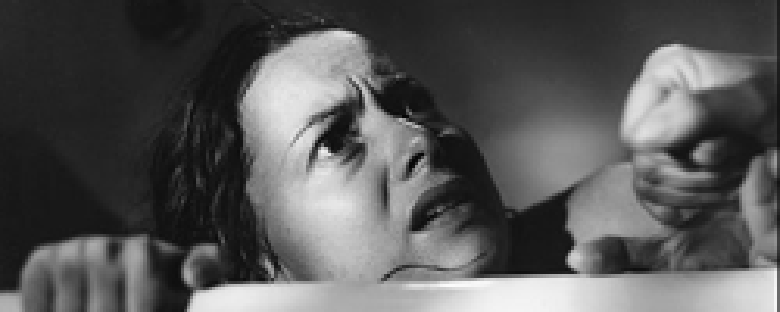Reviews
Anatole Litvak
USA, 1948
Credits
Review by Matt Bailey
Posted on 11 July 2004
Source Fox Studio Classics DVD
The title of this film, The Snake Pit, seems more appropriate to a horror film than to a penetrating study of mental illness, but what could be more horrifying than to lose one’s mind? Indeed, The Snake Pit feels at times like a horror movie. Virginia Cunningham, a young bride, finds herself locked away in a state mental hospital with no memory of how she got there or why. At times, she has perfect mental clarity; at other times, she cannot remember her own address or her last name. As her illness progresses, she is shuttled between several wards that appear to be numbered according to level of sanity. Virginia begins her stay in Ward 5, improves and moves to Ward 3, improves again and moves to Ward 1, then suffers a debilitating relapse and falls to Ward 33 — the ward for hopeless causes, or, the snake pit.
Olivia de Havilland, who stars as Virginia, was at the time of this film a major movie star. She had made several pictures at Warner Brothers, most successfully as a partner to Errol Flynn, but rarely as a lead. Her career took great leaps forward due to her Academy Award nominations for her supporting role as Melanie Wilkes in Gone With the Wind and for her lead role as Emmy Brown in Hold Back the Dawn. Frustrated by her desire to tackle the kind of meaty roles that win the award and by the reluctance of Warner Bros. to give them to her, she sued the studio to get out of her contract — an unheard of action at the time. Not only did she win her case, but the landmark law limiting actors’ contracts to seven years has since been known as the de Havilland law. Now a free agent, she quickly took the roles she had long desired and finally won her first Oscar for 1946’s To Each His Own. In 1948, she took the role of Virginia Cunningham and devoted herself to delivering a sensitive, accurate portrayal of a woman losing her grasp on reality. Not having been in that situation, I cannot say with any certainty that she succeeded, but there are moments in her performance that elicited in me a deep sense of fear for her character.
Unfortunately, the material de Havilland had to work with was not equal to her talent. Based on a bestselling book by a novelist who had, herself, spent nearly nine months in a mental hospital, The Snake Pit is certainly a more compassionate picture of the mentally ill, but one that still must conform to the rigid structures and codes of the classical Hollywood film. Thus, Virginia experiences torment for about ninety minutes and then is somewhat miraculously cured by the kind-hearted doctor who seems to spend all of his time caring for her to the neglect of the hundreds of other patients in the hospital. For its time, the film was taking a risk just in treating the issue of mental illness with any dignity, so perhaps it can be forgiven for representing it as something one can just snap out of like a bad dream. For the audience of today, however, the primary draw of the picture is watching Olivia de Havilland deliver a particularly terrifying performance. To see her at her best, however, I would kindly direct the reader to her next film, The Heiress, which won her a second, well-deserved Oscar.
We don’t do comments anymore, but you may contact us here or find us on Twitter or Facebook.



